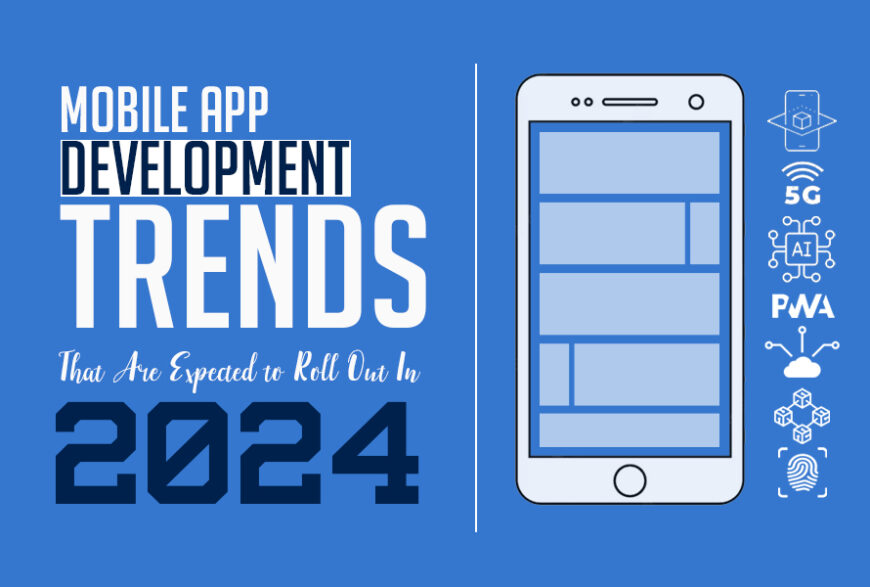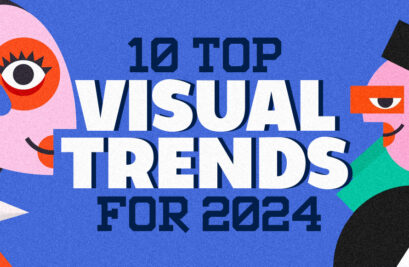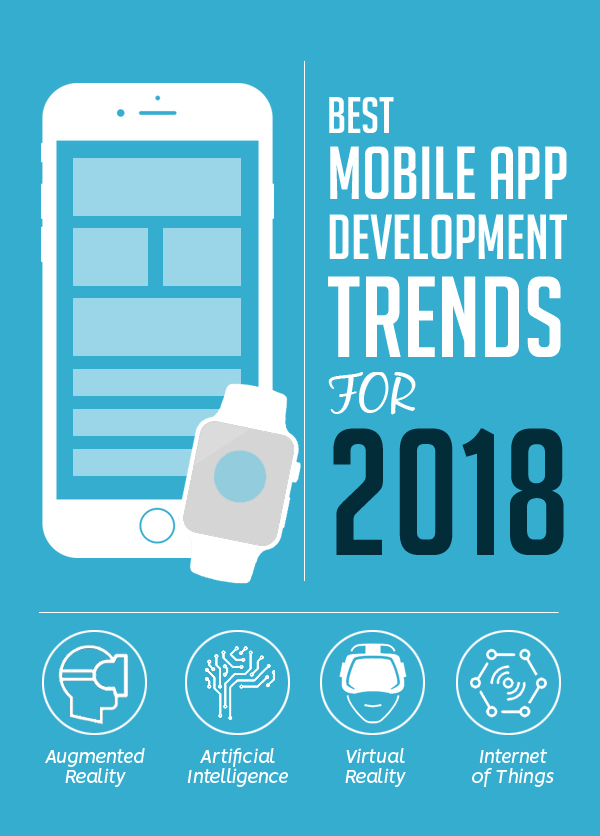The world of mobile app development is in a constant state of evolution. As we approach the year 2024, the industry is poised to witness a host of exciting new trends that promise to redefine the way we interact with our smartphones and tablets. In this article, we will explore some of the most futuristic and modern mobile app development trends that are expected to take center stage in 2024. From augmented reality (AR) to artificial intelligence (AI), these trends are set to revolutionize the mobile app landscape.
You may be interested in the following articles as well.
- UX Design Tips To Improve Mobile App User Experience
- 9 Tips For An Effective Mobile App Design
- 15 Best UI/UX Mobile App Design Trends and Key Principles
- How to Make Amazing UI/UX Design for Mobile Apps?
Table Of Content
Mobile App Development Trends
In today’s rapidly evolving technological landscape, mobile app development trends has become a dynamic and essential industry. With over 3.6 billion smartphone users worldwide, the demand for innovative mobile applications continues to surge. To remain competitive and meet the ever-growing expectations of users, developers must stay abreast of the latest trends in mobile app development.
In this article, we will explore some of the most influential and expected to roll out mobile app development trends in 2024 shaping the industry.
Augmented Reality (AR) and Virtual Reality (VR)
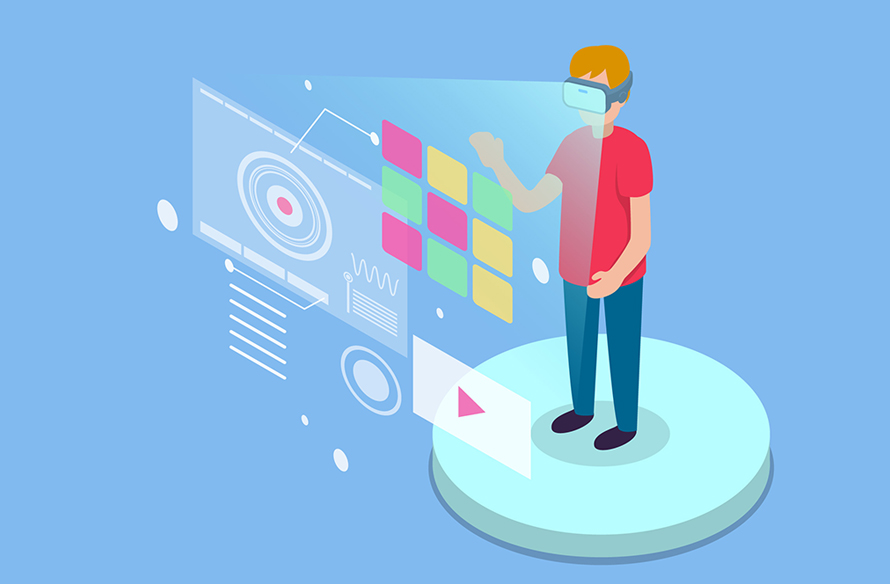
Augmented Reality (AR) and Virtual Reality (VR) have been steadily gaining ground in the mobile app development space, and 2024 is expected to be a breakthrough year for these technologies. AR apps like Pokemon Go and VR experiences like Oculus Rift have already showcased the immense potential of these technologies.
In 2024, we can expect to see a surge in AR and VR apps that cater to various industries, from gaming and entertainment to education and healthcare. These apps will provide users with immersive and interactive experiences that blur the lines between the physical and digital worlds.
AR, or Augmented Reality, enhances the real world by overlaying digital information and virtual objects onto a user’s physical surroundings. This technology is typically experienced through devices like smartphones, tablets, smart glasses, or headsets. AR applications range from gaming and education to medical training and navigation. For example, popular mobile apps like Pokemon Go and Snapchat utilize AR to blend digital elements with the real world, creating engaging experiences for users. In the business sector, companies use AR for remote assistance, enabling experts to guide technicians through complex tasks in real-time by overlaying instructions onto their field of view.
AR and VR will also play a significant role in enhancing user engagement and driving sales. For example, retailers can create AR aaugempps that allow customers to try on clothes virtually, while real estate companies can offer virtual property tours through VR apps.
Augmented Reality (AR) and Virtual Reality (VR) are two transformative technologies that have revolutionized various sectors, from entertainment and education to healthcare and manufacturing. While AR enhances the real world with digital information, VR immerses users in entirely digital environments. The technologies underpinning them are distinct, and their applications continue to expand as businesses and developers harness their potential. As these technologies continue to evolve, they promise to reshape the way we learn, work, and entertain ourselves, creating a more immersive and interconnected future.
5G Technology
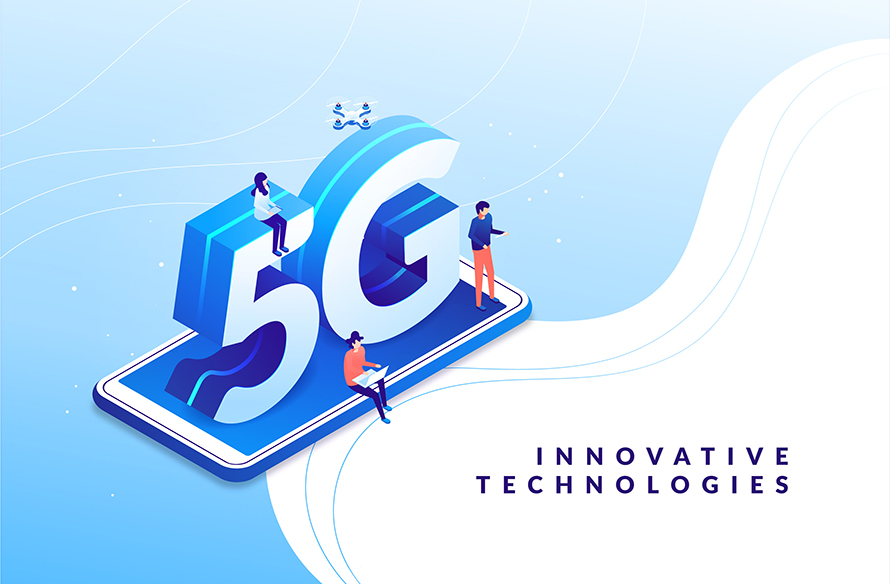
The rollout of 5G technology is set to revolutionize mobile app development trends in 2024. With its lightning-fast download and upload speeds, low latency, and increased network capacity, 5G will enable developers to create apps that were previously unimaginable.
One of the most significant impacts of 5G on mobile app development will be the proliferation of real-time streaming and augmented reality experiences. Users will be able to stream high-quality 4K videos and engage in AR applications without any noticeable lag, opening up new possibilities for entertainment and communication.
One of the key enabling technologies behind 5G is the use of higher frequency radio waves, known as millimeter waves (mmWave). These high-frequency waves provide the necessary bandwidth for 5G’s incredible speed but come with challenges. mmWave signals have shorter ranges and are more susceptible to obstructions like buildings and trees. To overcome this, 5G networks will require a denser network of small cell towers, placed closer together. This deployment, known as network densification, is already underway in many urban areas.
The Internet of Things (IoT) is another area where 5G technology is set to shine. With its ability to connect a vast number of devices simultaneously, 5G will empower the proliferation of IoT devices and applications. Smart cities, for instance, can harness 5G to monitor and manage everything from traffic flow and energy consumption to waste management and public safety in real time. Smart homes will become even smarter, with appliances, security systems, and entertainment devices seamlessly communicating and responding to user preferences.
Security and privacy concerns are essential considerations with the widespread adoption of 5G. The increased connectivity and data sharing raise questions about the protection of personal information and critical infrastructure. As the technology matures, addressing these concerns through robust encryption, authentication, and regulation will be crucial.
Artificial Intelligence (AI) and Machine Learning (ML)
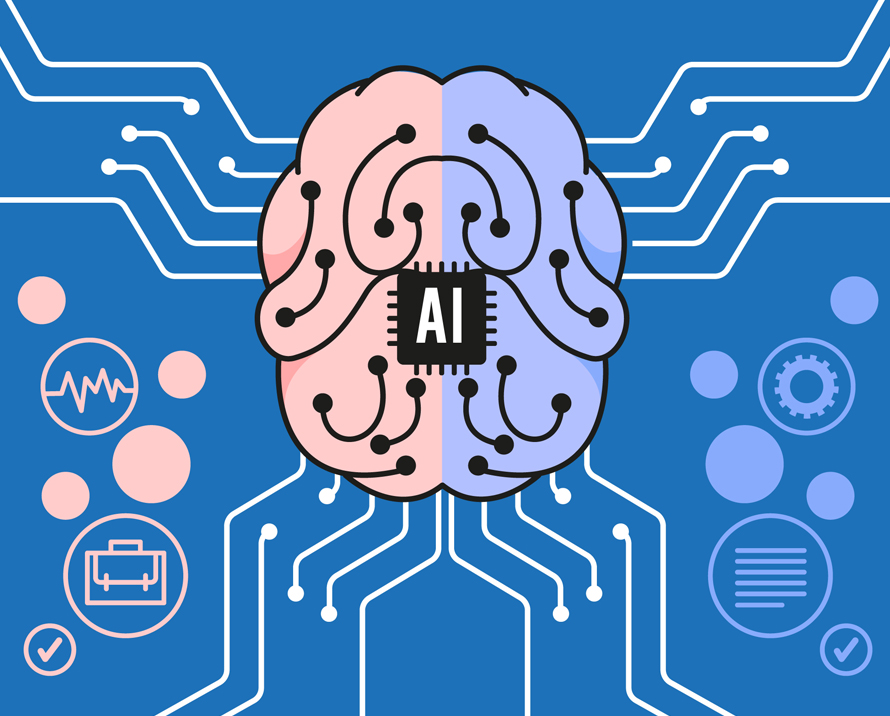
Artificial Intelligence (AI) and Machine Learning (ML) are poised to become even more integral to mobile app development trends in 2024. These technologies will be leveraged to create smarter and more personalized user experiences.
AI-powered chatbots and virtual assistants will become even more sophisticated, offering users natural language interactions and personalized recommendations. Mobile apps will be able to analyze user data to provide tailored content and services, making them more valuable to users.
AI is a broad and overarching concept that refers to the development of computer systems capable of performing tasks that typically require human intelligence. These tasks include reasoning, problem-solving, decision-making, understanding natural language, and perceiving and interpreting the world through computer vision. AI systems can be rule-based or use learning algorithms, and they have a wide range of applications across industries.
Machine Learning, on the other hand, is a subset of AI that focuses on the development of algorithms and statistical models that enable computers to learn and improve their performance on specific tasks without being explicitly programmed. ML systems learn from data and iteratively adjust their internal parameters to make predictions, classify information, or identify patterns. This learning process allows ML systems to adapt and improve their performance over time.
The relationship between AI and ML is symbiotic. Machine learning is a crucial component of AI, as it empowers AI systems to acquire knowledge and enhance their capabilities through experience. In essence, ML is the driving force behind many AI applications, enabling computers to process vast amounts of data, recognize complex patterns, and make predictions or decisions with increasing accuracy.
Natural Language Processing (NLP), a branch of AI, allows machines to understand and generate human language. This has paved the way for virtual assistants like Siri and Alexa, as well as language translation services like Google Translate. NLP is also utilized in sentiment analysis, content recommendation, and text summarization.
In healthcare, AI and ML will play a crucial role in diagnosing diseases and monitoring patient health, while in finance, these technologies will enhance fraud detection and risk assessment in real-time.
Progressive Web Apps (PWAs)
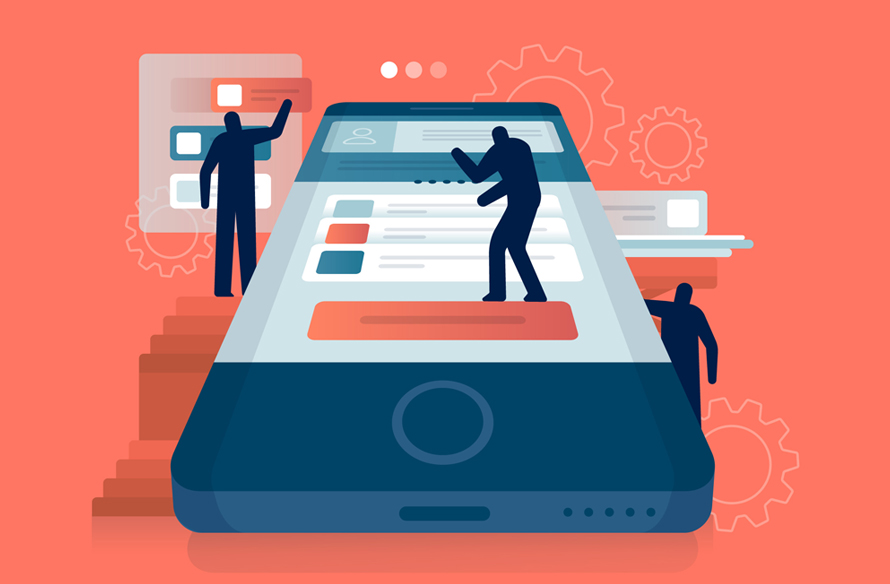
Progressive Web Apps (PWAs) have been gaining traction as a modern approach to mobile app development. PWAs offer the best of both worlds: the accessibility of web apps and the performance of native apps. In 2024, PWAs are expected to become even more popular.
PWAs are designed to be responsive and work seamlessly on various devices and screen sizes. They employ modern web technologies like service workers, which allow offline access and faster loading times by caching content. This ensures a consistent and reliable user experience regardless of internet connectivity.
One of the key advantages of PWAs is their ability to be installed directly on users’ devices without the need for app store downloads. Users can add PWAs to their home screens, making them easily accessible, just like native apps. This eliminates the friction associated with app store installations and updates.
Many major companies are already adopting PWAs, and we can expect to see more businesses and developers embracing this technology in 2024.
In summary, Progressive Web Apps combine the best aspects of web and mobile applications, offering cross-platform compatibility, offline access, cost-efficiency, and enhanced security. These characteristics make PWAs a compelling choice for businesses and developers looking to deliver engaging and accessible user experiences.
Edge Computing
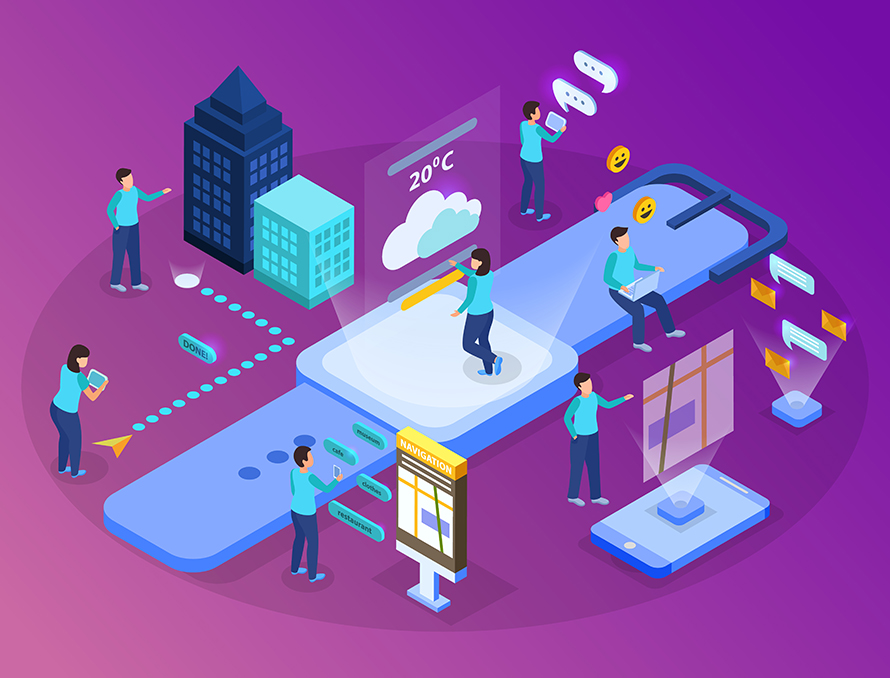
Edge computing is another trend that will shape the future of mobile app development trends in 2024. This approach involves processing data closer to the source, reducing latency and improving overall app performance.
Edge computing will enable mobile apps to deliver real-time experiences, particularly in sectors like gaming and autonomous vehicles. By processing data at the edge, apps can respond quickly to user inputs and external stimuli.
Edge computing is a transformative paradigm in the field of information technology, shifting the way data processing and analysis are carried out. Unlike traditional centralized cloud computing, where data is sent to remote data centers for processing, edge computing brings computation and data storage closer to the source of data generation, often at the edge of the network, such as IoT devices, sensors, or edge servers.
This proximity to data sources in edge computing offers several advantages. Firstly, it reduces latency by minimizing the time it takes for data to travel to a remote server and receive a response. This is crucial for applications requiring real-time or near-real-time processing, such as autonomous vehicles, industrial automation, and augmented reality.
Secondly, edge computing enhances privacy and security. By processing sensitive data locally or within a specific network, organizations can maintain better control over their data, reducing the risks associated with transmitting data across public networks.
Moreover, edge computing will enhance the security and privacy of mobile apps by minimizing the amount of data that needs to be transmitted to centralized servers. This will be especially important as concerns about data privacy continue to grow.
Biometric Authentication

As security concerns continue to mount, biometric authentication methods are expected to play a more prominent role in mobile app development trends in 2024. Fingerprint recognition, facial recognition, and even iris scanning will become standard features in many apps.
Biometric authentication is a highly secure and convenient method of verifying an individual’s identity by using their unique physical or behavioral characteristics. Unlike traditional methods like passwords or PINs, which can be forgotten, stolen, or shared, biometric authentication relies on distinct biological traits that are difficult to replicate or forge.
Biometric data commonly used for authentication includes fingerprints, facial features, iris patterns, voiceprints, and even behavioral traits like typing patterns and gait. When an individual seeks access to a system or device, their biometric data is captured, processed, and compared to pre-registered data stored securely in a database.
The advantages of biometric authentication are numerous. Firstly, it enhances security, as biometric features are unique to each person and difficult to counterfeit. This reduces the risk of unauthorized access or identity theft.
Secondly, biometric authentication is user-friendly and efficient. Users don’t need to remember complex passwords or carry physical tokens like smart cards. They simply need to provide their biometric data, which is typically fast and convenient.
However, biometric authentication is not without challenges. Privacy concerns arise due to the storage and potential misuse of sensitive biometric information. There’s also a risk of false positives and false negatives, where legitimate users may be denied access or unauthorized individuals may gain entry.
Blockchain Integration
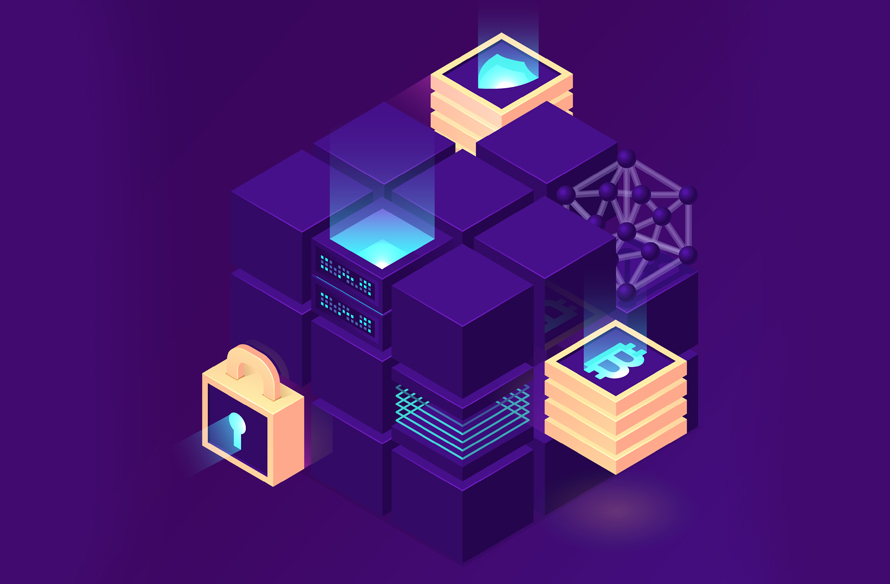
Blockchain technology is not limited to cryptocurrencies; it has a wide range of applications, and mobile app development is no exception. In 2024, we can expect to see more apps integrating blockchain for enhanced security, transparency, and data integrity.
Blockchain integration refers to the process of incorporating blockchain into existing systems, applications, and processes, offering a wide array of benefits across various sectors.
- Enhanced Security: One of the primary advantages of blockchain integration is its robust security features. Transactions on a blockchain are cryptographically secured, creating a tamper-proof record. Data stored on a blockchain is distributed across a network of nodes, making it highly resistant to hacking, fraud, and data manipulation. This heightened security is particularly valuable in sectors such as finance, healthcare, and supply chain management, where the integrity and confidentiality of data are paramount.
- Improved Transparency: Blockchain’s decentralized nature means that multiple parties can have simultaneous access to a single, shared ledger. This transparency reduces the potential for disputes and fraud, as all participants can independently verify the accuracy of transactions and data. In supply chain management, for example, blockchain integration allows consumers to trace the origins of products, enhancing trust and accountability.
- Efficiency and Reduced Costs: Blockchain integration can streamline complex processes by automating trust mechanisms. Smart contracts, self-executing agreements with predefined rules, enable automatic execution of actions when certain conditions are met. This reduces the need for intermediaries, leading to faster transactions and cost savings. In financial services, blockchain-based cross-border payments can settle transactions in seconds rather than days.
- Decentralization and Resilience: Unlike centralized databases, which are vulnerable to single points of failure, blockchain operates on a decentralized network. Even if a portion of the network goes offline, the system continues to function. This resilience is valuable in critical sectors like energy distribution, where uninterrupted service is essential.
- Data Integrity and Proof of Ownership: Blockchain provides a secure and unchangeable record of ownership and data history. This is particularly advantageous in intellectual property management, where artists, writers, and inventors can prove ownership and protect their creative work. Additionally, blockchain integration in voting systems can ensure the integrity of election results.
- Supply Chain Traceability: Many industries benefit from blockchain’s ability to track the movement of goods throughout the supply chain. For example, in the food industry, consumers can verify the origin and safety of products. In pharmaceuticals, blockchain integration helps prevent counterfeit drugs from entering the market.
- Cross-Industry Integration: Blockchain’s versatility allows it to integrate with other emerging technologies such as the Internet of Things (IoT) and Artificial Intelligence (AI). In IoT applications, blockchain can securely record data from connected devices, ensuring the integrity and authenticity of sensor-generated data. AI and blockchain integration can enhance data security and the trustworthiness of AI-driven decisions.
Despite these advantages, blockchain integration is not without challenges. Scalability remains a concern, as blockchain networks must accommodate an increasing number of transactions. Energy consumption in proof-of-work blockchains has raised environmental concerns, leading to exploration of more eco-friendly consensus mechanisms. Regulatory frameworks are also evolving, with governments worldwide seeking to establish guidelines for blockchain technology.
Blockchain can be used in various industries, from supply chain management to voting systems. Mobile apps will enable users to access and interact with blockchain networks seamlessly, opening up new possibilities for decentralized applications (DApps).
Conclusion
The year 2024 promises to be an exciting time for mobile app development, with a host of futuristic and modern trends set to reshape the industry. From augmented reality and 5G technology to artificial intelligence and blockchain integration, these trends will unlock new possibilities and enhance the way we interact with mobile apps.
Developers and businesses that embrace these trends will be well-positioned to stay ahead of the curve and deliver innovative and engaging mobile experiences to users worldwide. As we look forward to 2024, the future of mobile app development has never been more promising.

